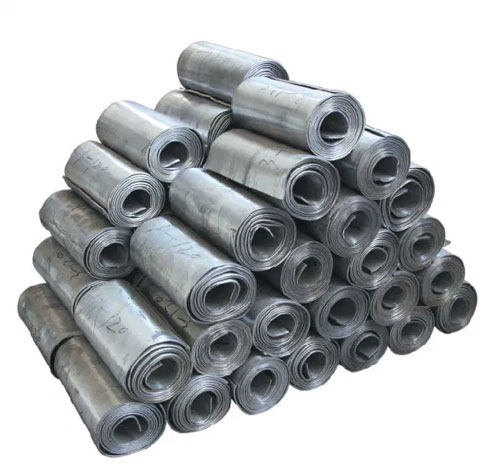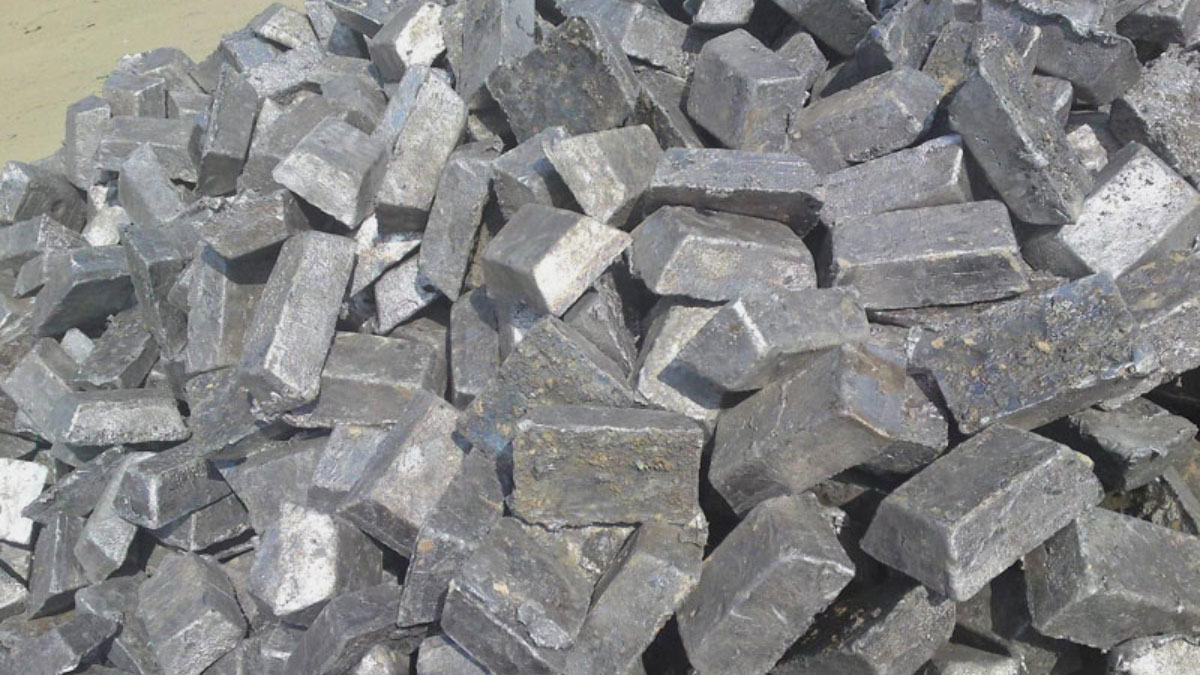How Heavy is Lead? Complete Weight Analysis Guide
Lead is one of the heaviest common metals found in everyday applications. This dense, bluish-gray metal has fascinated humans for millennia due to its remarkable weight and unique properties. Let’s explore in detail just how heavy lead really is and what makes it such a dense material.
Physical Properties and Density
Lead has an impressive density of 11.34 g/cm³ at room temperature[3]. To put this in perspective:
- It’s over 11 times heavier than water
- Nearly 1.5 times denser than iron
- About 1.3 times denser than copper[5]
The metal’s high atomic mass of 207.2 and close-packed face-centered cubic structure contribute to its exceptional density[5]. When in liquid form at its melting point, lead’s density slightly decreases to 10.66 g/cm³[5].

Atomic Structure and Weight
Lead’s significant weight comes from its atomic structure:
- Atomic number: 82
- Atomic mass: 207.2 u
- Electron configuration: [Xe] 4f¹⁴ 5d¹⁰ 6s² 6p²[5]
This heavy atomic structure results from lead having:
- 82 protons
- 125 neutrons (in its most common isotope)
- 82 electrons arranged in multiple shells[5]
Comparative Density
When compared to other common materials, lead’s density stands out significantly[5]:
| Material | Density (g/cm³) |
|---|---|
| Lead | 11.34 |
| Copper | 8.96 |
| Iron | 7.87 |
| Zinc | 7.14 |
| Water | 1.00 |
Industrial Applications Due to Weight
The exceptional density of lead makes it invaluable in numerous industrial applications where weight is a crucial factor.
Radiation Shielding
Lead’s high atomic number and density make it an excellent radiation shield. Its applications include:
- Medical facilities (X-ray rooms)
- Nuclear power plants
- Scientific laboratories
- Space exploration equipment
Construction and Building
In construction, lead’s weight serves multiple purposes:
- Sound dampening in walls and floors
- Vibration reduction in industrial equipment
- Counterweights in elevators and machinery
- Structural stability in historic buildings
Marine Applications
The maritime industry utilizes lead’s weight for:
- Boat keels and ballast
- Anchor weights
- Diving weights
- Submarine ballast systems
Weight-Related Properties
Specific Gravity
Lead’s specific gravity of 11.34 means:
- It sinks rapidly in water
- Creates strong downward force in applications
- Provides excellent stability in marine uses
Weight Distribution
Lead’s weight distribution characteristics include:
- Uniform density throughout the material
- Excellent malleability despite high weight
- Even pressure distribution under load
Temperature Effects
Temperature changes affect lead’s weight properties:
- Expands by 29.3 × 10⁻⁶/°C
- Density decreases slightly with heating
- Becomes more malleable at higher temperatures
Weight Calculations and Measurements
Understanding how to calculate lead’s weight is crucial for various applications and safety considerations.
Volume to Weight Conversion
To calculate lead’s weight from volume:
- Weight = Volume × Density
- For pure lead: Weight (g) = Volume (cm³) × 11.34
Common Conversions:
- 1 cubic foot of lead = 707.9 pounds
- 1 cubic meter of lead = 11,340 kilograms
- 1 cubic inch of lead = 0.41 pounds
Standard Forms and Weights
Lead commonly comes in several standard forms:
| Form | Typical Weight | Dimensions |
|---|---|---|
| Sheet (1/8″) | 8 lbs/sq ft | 12″ × 12″ |
| Brick | 25 lbs | 6″ × 3″ × 2″ |
| Ingot | 50-70 lbs | Variable |
| Shot | 1-2 oz each | 0.1-0.3″ diameter |
Safety Considerations Related to Weight
Handling Precautions
The substantial weight of lead requires specific handling procedures:
- Maximum manual lifting limit: 35 lbs per person
- Use mechanical assistance for larger pieces
- Proper footwear required for protection
- Multiple handlers needed for large sheets
Structural Support Requirements
When using lead in construction:
- Floor load capacity must be calculated
- Additional support may be needed
- Regular structural inspections required
- Distribution of weight must be considered
Chemical Properties Affecting Weight
The chemical composition and reactions of lead can significantly impact its weight characteristics.
Oxidation Effects
When lead oxidizes:
- Forms lead oxide (PbO) with increased volume
- Weight per volume decreases slightly
- Surface becomes less dense
- Color changes from bluish-gray to whitish
Compound Formation
Lead compounds often have different weights:
| Compound | Density (g/cm³) | Relative Weight Change |
|---|---|---|
| Pure Lead | 11.34 | Baseline |
| Lead Oxide | 9.53 | -16% |
| Lead Sulfide | 7.60 | -33% |
| Lead Chloride | 5.85 | -48% |
Environmental Impact of Lead Weight
Transportation Considerations
The heavy nature of lead affects:
- Fuel consumption during transport
- Vehicle load limits
- Road wear and tear
- Shipping costs and methods
Disposal Challenges
Lead’s weight creates specific disposal issues:
- Landfill stability concerns
- Groundwater pressure risks
- Soil compaction effects
- Transportation restrictions
Historical Significance of Lead Weight
Ancient Uses
Throughout history, lead’s weight was valuable for:
- Currency and trade weights
- Building materials
- Weaponry
- Maritime applications
Modern Evolution
Contemporary understanding of lead’s weight has led to:
- More efficient use in industrial applications
- Better safety protocols
- Improved handling methods
- Alternative material development
Frequently Asked Questions About Lead Weight
Common Questions and Expert Answers
Q: How much does a cubic foot of lead weigh?
A: A cubic foot of lead weighs approximately 707.9 pounds (321.1 kg) at room temperature.
Q: Why is lead so heavy compared to other metals?
A: Lead’s high atomic number (82) and dense atomic structure with closely packed atoms contribute to its significant weight.
Q: Does lead float in any liquid?
A: Lead sinks in most common liquids, including mercury (density 13.534 g/cm³), which is one of few liquids denser than lead.
Q: How does temperature affect lead’s weight?
A: While mass remains constant, lead’s density slightly decreases with increasing temperature, affecting its volume-to-weight ratio.
Industry-Specific Applications
Medical Field
Lead’s weight properties are crucial in:
- Radiation Protection: Protective barriers and clothing
- Equipment Stabilization: Medical imaging machines
- Therapeutic Tools: Weighted therapy equipment
- Laboratory Equipment: Balance weights and stabilizers
Automotive Industry
Vehicle applications include:
- Wheel weights for tire balancing
- Battery components
- Vibration dampening
- Sound insulation
Construction Sector
Building applications utilizing lead’s weight:
| Application | Purpose | Typical Weight Range |
|---|---|---|
| Roofing | Weatherproofing | 2-4 lbs/sq ft |
| Soundproofing | Acoustic Control | 1-2 lbs/sq ft |
| Structural Joints | Stability | 5-10 lbs/joint |
| Foundation Plates | Load Distribution | 10-20 lbs/plate |
Technical Specifications and Standards
International Weight Standards
Lead weight specifications follow various international standards:
- ASTM B29 for refined lead
- ISO 3953 for lead density measurements
- EN 12588 for rolled lead sheet
- JIS H 2105 for lead and lead alloys
Quality Control Measures
Weight verification methods include:
- Archimedes principle testing
- Digital densitometry
- Ultrasonic thickness testing
- X-ray fluorescence analysis
Key Takeaways
Lead’s exceptional weight characteristics make it a crucial material in modern industry and technology. Its density of 11.34 g/cm³ provides unique advantages in radiation shielding, construction, and maritime applications. Understanding its weight properties is essential for safe handling and effective utilization across various sectors.
Future Trends and Developments
The future of lead usage considering its weight properties includes:
- Development of lighter alternatives
- Enhanced safety protocols
- Improved recycling methods
- New industrial applications
Citations:
[1] https://www.frontiersin.org/journals/pharmacology/articles/10.3389/fphar.2021.643972/full
[2] https://pmc.ncbi.nlm.nih.gov/articles/PMC10631288/
[3] https://chemicalengineeringworld.com/lead-element-properties-and-information/
[4] https://maycoindustries.com/the-rich-history-of-lead/
[5] https://en.wikipedia.org/wiki/Lead
[6] https://study.com/learn/lesson/lead-element-properties-facts-discovery.html
[7] https://www.atsdr.cdc.gov/csem/leadtoxicity/physiological_effects.html
[8] https://pmc.ncbi.nlm.nih.gov/articles/PMC4961898/
[9] https://study.com/academy/lesson/heavy-metals-definition-examples.html
[10] https://www.growleady.io/blog/what-is-lead-and-why-is-it-important







